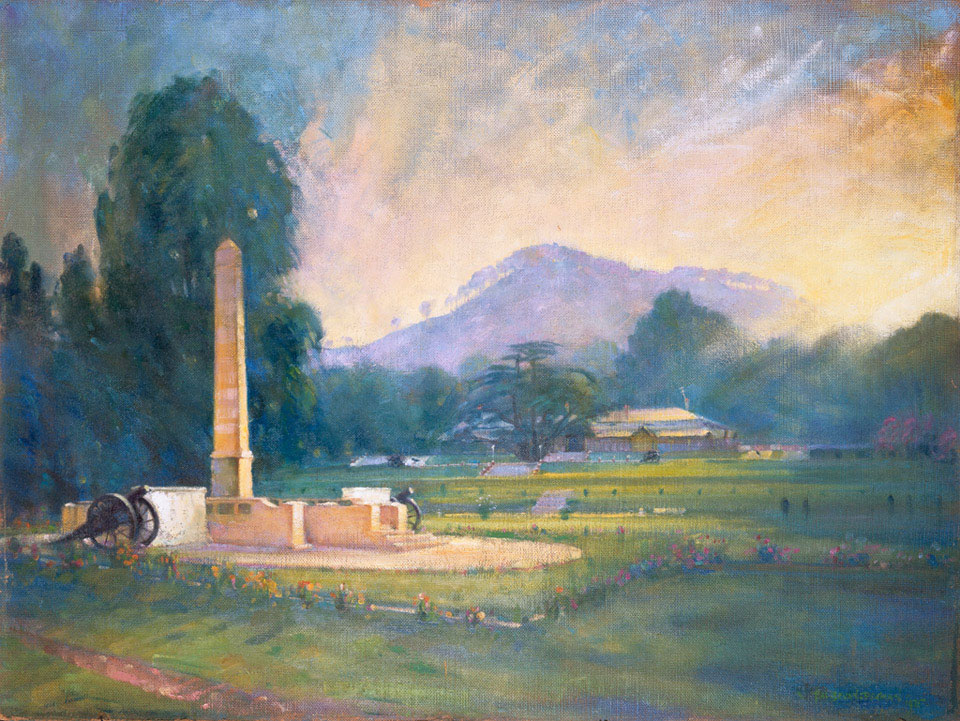
Online Collection
The Punjab Frontier Force Memorial on the Maidan at Kohat, erected in memory of the officers and men killed during the two World Wars, 1955
Oil on hardboard, signed and dated lower right 'HAL BEVAN.PETMAN/ 1975', by Hal Bevan-Petman (d 1980), 1975.
The memorial was unveiled on 23 October 1924 by General Sir William Birdwood GCB GCMG KCSI CIE DSO who was Commander-in-Chief in India. It was raised by subscriptions from all units of the force, to commemorate those who lost their lives in the First World War. It took the form of an obelisk about 30 feet high, standing on a plinth which was approached from the north over a small bridge or from the south by a flight of five steps. The memorial was rededicated in 1955 to also commemorate those who died in the second world war. After the regiment moved to Abbottabad, in 1964 the memorial was was also relocated there on the instructions of General Muhammad Musa, Commander-in-Chief of the Pakistan Army.
The various units comprising the Punjab Frontier Force, or 'Piffers' as they are affectionately known, were raised from 1843 onwards. However, it is generally held that the unit came into being in 1849 as the Trans-Frontier Brigade, raised by the Punjab Government to protect the Province and especially its much-exposed North-West Frontier.
The formation consisted of three light field batteries, five regiments of cavalry and five battalions of infantry. In 1851 it was redesignated the Punjab Irregular Force and steadily grew with the addition of one garrison artillery battery, two mountain batteries, the famous Corps of Guides, four regiments of Sikh Infantry, a sixth regiment of Punjab Infantry and one regiment of Gurkhas. In 1865 the unit was redesignated the Punjab Frontier Force and in 1886 was transferred from the control of the Punjab Government to the Commander-in-Chief, India.
Though it ceased to exist as a separate unit after Lord Kitchener's reforms of 1903 when Commander-in-Chief, India, the Punjab Frontier Force's esprit de corps lived on. After the 1922 re-organisation of the Indian Army, the four old Sikh Infantry battalions of the Piffers and the Guides Infantry became the 12th Frontier Force Regiment, and the five Punjab Infantry battalions became the 13th Frontier Force Rifles.
After the Partition of India in August 1947 the frontier force units were divided between the Indian and Pakistan Armies. It was then decided that the memorials to the Piffers erected in the garrison churches should be relocated to England, and in 1951 they were installed in the Parish Church of St. Luke's, Chelsea. In 1998 the collection of memorials was donated to the National Army Museum, together with this painting.
NAM Accession Number
NAM. 1998-10-3-1
Copyright/Ownership
National Army Museum Copyright
Location
National Army Museum Sandhurst, Old College Corridor East
Object URL
https://collection.nam.ac.uk/detail.php?acc=1998-10-3-1

